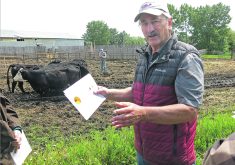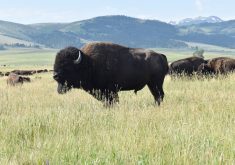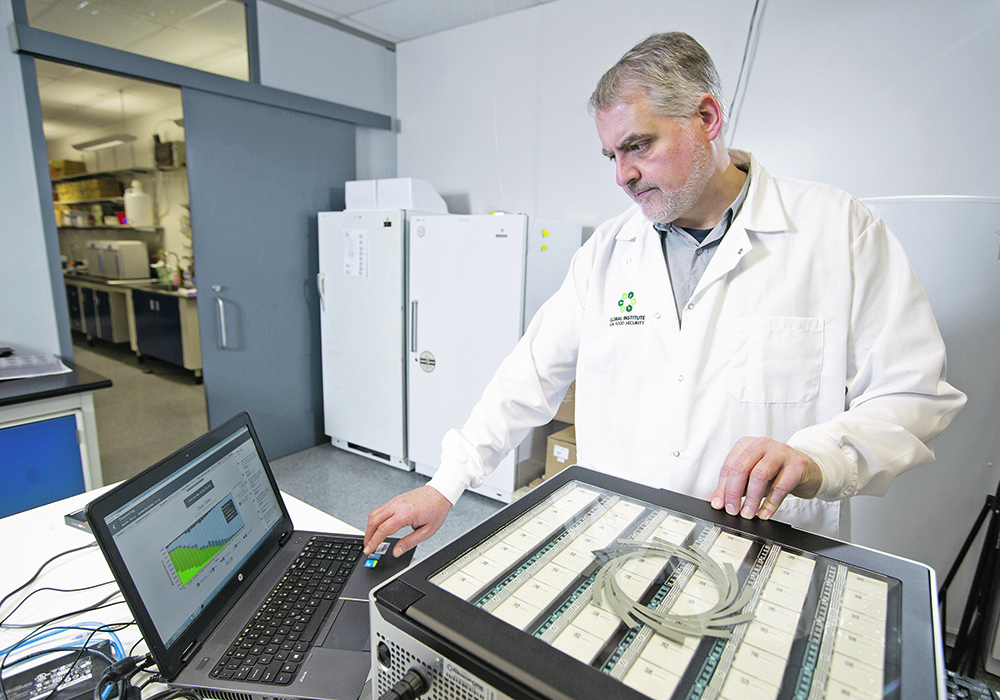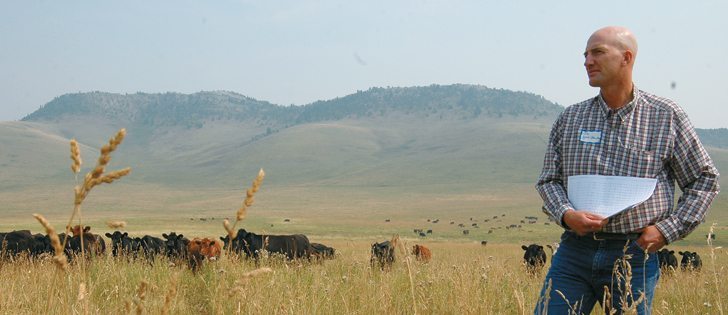Plant scientists and genomics experts in Canada have sequenced and assembled the first reference genome for a Canadian malting barley variety.
The genome for AAC Synergy barley was made public earlier this year in a project led by Agriculture Canada.
AAC Synergy was developed by Agriculture Canada barley breeder Bill Legge and was registered in 2012.
Over the past few years, Canadian production of AAC Synergy has increased significantly, particularly among growers seeking a new high yielding, disease resistant alternative to established malting standbys like CDC Copeland and AC Metcalfe.
Read Also

Why feds imposed EV tariffs
Moe and Kinew have a fight on their hands when it comes to eliminating the EV tariff. Canada has to worry about pissing off the U.S. and Mexico and hundreds of thousands of auto workers.
According to some trial data, Synergy’s yield potential is 13 to 14 percent higher than that of AC Metcalfe and seven to eight percent higher than that of CDC Copeland.
Global utilization of AAC Synergy by large-scale brewers and malting companies has also been growing steadily.
In 2021, it was the second most popular malting barley variety grown in Western Canada, suggesting widespread adoption by the malting and brewing industries.
AAC Synergy is the first of four Canadian barley varieties whose genomes will be sequenced and assembled under a larger genomics initiative called Targeted and Useful Genomics for Barley and Oat (TUGBOAT).
The other Canadian barley genomes to be sequenced and assembled include AAC Connect, AC Morrison and CDC Austenson, currently the most widely grown feed barley variety in Western Canada.
Ag Canada barley breeder Ana Badea, who serves as co-lead of the TUGBOAT project, said each Canadian barley variety was chosen because it offered unique or commercially valuable characteristics to growers and end users.
AAC Synergy was chosen because of its high yield potential, good disease resistance and preferred malting and brewing characteristics.
Completion of the Synergy genome and the development of genetic markers for breeding purposes will give Canadian barley breeders the ability to make selections for yield, malting quality and other important characteristics at an early stages in their breeding programs, said Badea.
The addition of other Canadian barley genomes over the next year or two will give to breeders a more detailed picture of the different genetic resources that exist in Canadian varieties of interest.
The completion of the Canadian barley genomes will put Canada on a more equal footing with other major barley producing and exporting nations, many of which already have access to barley reference genomes of their own.
“These days, without a doubt, genome sequencing is at the cutting edge of life science,” Badea said in an April 28 interview with the Western Producer.
“For us to be able to do this and to be able to develop these genomics resources… is very exciting.”
“This way, we can assure that Canada is going to maintain the leading role that it has and that our farmers and end users… stay competitive.”
The TUGBOAT initiative, which received funding and support from a variety of public and producer sources, is also working on sequencing, assembling and annotating the genomes of at least four Canadian oat varieties, as well as two wild relatives of cultivated oats, Avena longiglumis and Avena insularis.
Genomes have already been assembled for Canadian oat varieties Nicolas, Gehl, HiFi and Park, said TUGBOAT project leader and Ag Canada scientist Nick Tinker, although the oat sequences have yet to be published.
Work is now taking place to annotate the oat genomes and provide information about individual genes of interest and their locations on the genomes.
Tinker, the leader of Canada’s TUGBOAT project, said the number of individual reference genomes for oats and other crop species is increasing as science improves, new techniques are developed and sequencing costs come down.
“It’s becoming more difficult to publish something that’s just a genome now,” he said.
“You can release a genome with just a description of the sequence, but it’s far more impactful if you can release that sequence along with a new scientific understanding that was derived from that sequence.”
“So yes, we’ve got assembled oat genomes (in Canada) already, but we’re continuing to improve them and… we’re annotating them with information about what genes lie where and what re-arrangements lie where.”
The Canadian genomes will be part of a larger international project known as PanOat, which involves a consortium of international oat genome experts who are sequencing and annotating more than 30 oat genome reference sequences.
The goal of PanOat is to learn more about the oat pan-genome.
A pan-genome is a complete set of genes, gene variants, and chromosome conformations in a single species.
“We’ve convinced everyone else in the world that’s interested in sequencing oat genomes to come and do it together in a more coordinated way,” explained Tinker.
“There are 32 oat genomes around the world being sequenced now … so we’re essentially going to be using (Canada’s oat genomes) as trading cards to get access to all of those genomes.”
Tinker said Canada could have chosen to publish details of its oat genomes separately but chose instead to be part of the international PanOat consortium and to publish information as a group.
“We’ll co-ordinate the analysis with the rest of the world and publish (our findings) together,” Tinker said.
“But we’ll also be able to get what we want out of the Canadian genomes in terms of market development and getting a head start on trait discovery by holding those Canadian trading cards close to our chest for the time being.”
The decision on how to release genomic information is always a strategic consideration, Tinker added.
“We’ve decided, in the case of oats, that we’re going to get on the front row of the bus instead of driving our own sports car,” he said.
“If we had chosen to drive our own sports car, we wouldn’t be allowed on the bus and we think that the bus gives us the best opportunity to arrive at the right destination with the best results.”
Tinker said genome sequencing and pan-genome development are important pre-requisites to so-called smart breeding initiatives that use gene editing or other breeding technologies to identify, access, move and utilize individual genes with greater precision.
Smart breeding requires identifying and isolating specific genes, he said.
“It’s knowing what their sequence is, what their function is and knowing where we can get those genes and how we’re going to move them around” to achieve the intended results.
















